Why Is Orthodontic Care So Important?

Many patients receive orthodontic care during childhood or early adolescence. As modern technology has advanced, so has the need for orthodontic care in patients of all ages. Whether your symptoms are severe or not, orthodontic care can help monitor face and jaw development, reduce the risk of impacted teeth and correct life-time dental issues. Early detection and treatment are essential for good oral health and maintaining a beautiful smile. No matter what your age is, find out how orthodontic care can benefit you now and what effects it can have on you in the future with this guide!
Benefits of Orthodontics
Just like any other product you buy or activity that you participate in, orthodontics is an investment. It is an investment of time, money and patience, but the results can be life-changing. There are a variety of options to choose from when receiving orthodontic care, and many are so discreet that you hardly even notice that they’re there. Orthodontic treatment helps establish good oral health and can pave the way for a healthy smile now and in the future. A healthy bite and a good-looking smile is just as important at age 60 as it is at 16, and orthodontic treatment is the way that you can ensure that you have both. For kids, some benefits of early orthodontics include:
- Observe the progress of incoming teeth
- Guide teeth into their ideal positions
- Monitor face and jaw development
- Reduce the risk of impacted teeth
- Detect hidden dental issues
As technological advances in dental science has improved, there are more options than ever for adults seeking orthodontic treatment. Many times, adults have been struggling with specific orthodontic issues since childhood that have never been resolved, but orthodontic care can fix that. Even though orthodontic treatment is most successful during adolescence as teeth and jaw bones are still developing, adults can still enjoy improvements to their oral health with orthodontic treatment at any age. Whether it be traditional metal brackets or other discreet options, like Invisalign, there are plenty of ways to straighten teeth. Some of the many benefits that adult orthodontics provide include:
- Faster treatment time than former orthodontic techniques
- Correction of life-time dental problems
- More discreet treatment methods
- Increased self-esteem and confidence
When To See An Orthodontist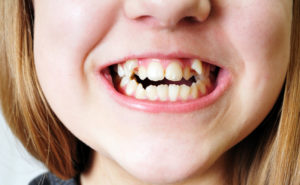
The American Association of Orthodontics recommends that children have their first orthodontic visit by age 7 or 8 to prevent the progression of any orthodontic issues that may be present. Even if you do not detect any dental issues with your child, it is still important that they get evaluated early on so that their teeth and jaw development can be properly monitored. If you notice that your child has bite problems or protruding teeth, it is time for them to see an orthodontist. Bite problems, such as a crossbite, cause the jaws to develop unevenly, while protruding teeth can be fractured or injured much easier than normal teeth. For both children and adults, there are certain signs that you should look out for that may necessitate an orthodontic visit. Some of these symptoms include difficulty chewing or biting, jaws that shift or make sounds, grinding/clenching teeth, biting the cheek or roof of the mouth, protruding teeth, and facial imbalance or asymmetry (facial features out of proportion). Even oral habits, such as thumb-sucking, affect how the mouth develops and can necessitate orthodontic treatment. For many patients, orthodontic treatment isn’t necessarily needed but is wanted to improve self-confidence and give them a prettier smile. Whatever your reason is, orthodontic care can help you reach your goals and improve your oral health at any stage in life.
How You Can Start
After you make the decision to begin orthodontic treatment for yourself or your child, the first thing to do is schedule an appointment with your orthodontist for a consultation. This consultation will allow both of you to establish appropriate goals, address concerns and develop a treatment plan. Additionally, taking good care of your teeth at home by maintaining an oral health regimen is important to keep your teeth healthy and prepare them for orthodontic treatment. Consistent brushing and flossing each day will protect your teeth and gums from plaque, tooth decay and cavities. During orthodontic treatment, it’s essential to maintain this routine to avoid any complications from occurring, which can extend treatment time and be costly to fix.
If you have questions regarding orthodontic treatment for yourself or your child, call Belmar Orthodontics at (303) 225-9016! Our talented staff is dedicated to you and your oral health goals, and will strive to help you get the beautiful smile that you deserve!
How Upper Jaw Expansion Can Benefit Your Child
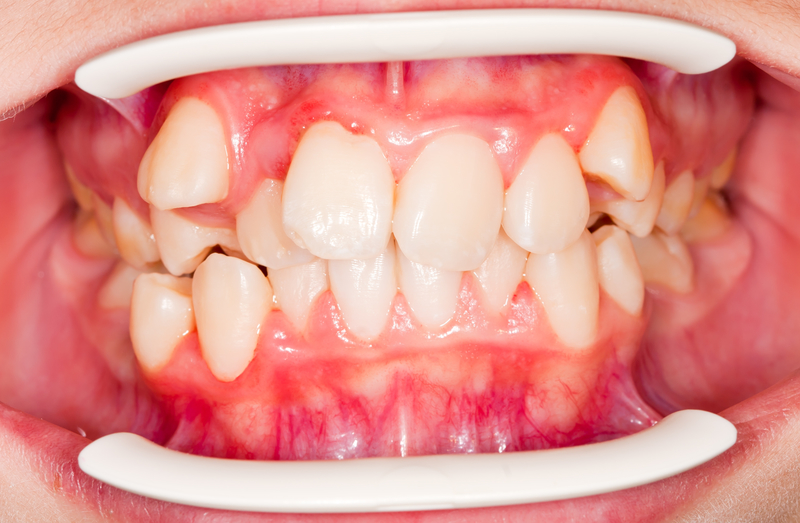
Upper jaw expansion is an orthodontic treatment that creates more space growth for developing kids by widening the circumference of the palate. This procedure helps correct crossbites, reduces overcrowding, and improves breathing ability. Most adolescents will receive this treatment before 16 years of age, but adults can also expand their upper jaw, if needed, as well. Read on to find out how upper jaw expansion works and what the advantages are with these tips!
Jaw Positioning and Malocclusion
Many patients deal with malocclusion, or crooked teeth and a poor bite. A poor bite refers to the way the upper and lower teeth line up, which is affected by the structure of the jaw. A “normal bite” consists of the upper teeth sitting slightly forward of the lower teeth, which allows for proper movement. Malocclusion is normally a cosmetic problem, but when it interferes with how teeth erupt, it can cause crooked teeth and tooth decay. A common cause of malocclusion is having too much or too little room in the jaw, which affects whether teeth grow in crowded or crooked. The shape and size of the jaw can also affect how severe someone’s malocclusion is, but thumb-sucking and tooth loss can also influence this process. For many patients, especially children, malocclusion is caused by a limited amount of space in the mouth for teeth to grow, so they either grow in crooked or the bite is altered. For this reason, many young dental patients receive upper jaw expansion treatments to allow more room in the mouth and prevent malocclusion. As more study and insight has been gained on the structure of the mouth, there are now more possibilities to fix incorrect bites, adjust occlusion and prevent crooked teeth starting from an earlier age.
Reasons For Upper Jaw Expansion
Upper jaw expansion is a specific treatment for widening the circumference of the palate to increase the perimeter of the dental arch in the mouth, which creates more space for teeth to grow. When there is enough room for teeth to grow, they are more likely to develop correctly. During childhood, palatal or maxillary expanders are used to aid this process. Through these expanders, dentists can help correct a crossbite that is caused by malocclusion. Normally, the upper teeth should close around the outside of the lower teeth, but when someone has a narrow palate, the opposite can occur and create a crossbite. As the upper teeth bite inside the lower teeth, an asymmetrical growth of the lower jaw can develop and change the symmetry of one’s face. This can cause serious complications if not addressed early on. Lastly, upper jaw expansion methods improve breathing ability, which is greatly affected by a narrow jaw. A narrow or deep upper jaw can make it difficult for a child to breathe through their nose and results in constant mouth breathing. While it doesn’t sound very serious, consistent mouth breathing keeps the mouth open at night, allowing for unfiltered bacteria to enter into the oral cavity, causing dry mouth and halitosis (bad breath).
Treatment Options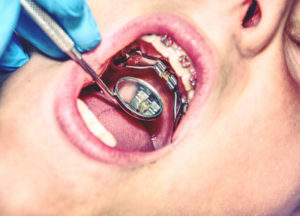
Upper jaw expansion is most successful when done at an earlier age while the mouth is still developing. For adults, those with a crossbite may only need a dental expansion instead of a palatal expansion, but may need surgery if palatal expansion is required to fix concerns. Depending on the age of the patient and the reason for treatment, a rapid palatal expander (RPE) may be used to increase the width of the jaw. The RPE is attached to the upper molars by bonding or cemented bands, and uses a special key that is used to widen the space by turning a screw in the appliance at certain points in time. This process puts extra pressure on the two halves of the upper jaw, which causes extra bone to grow between them. Gradually, by turning the screw with the key each day, the jaw widens to make room available for developing teeth. For adults, removable expanders can be used, as well, whenever the degree of expansion is minimal. Resembling a partial denture, removable expanders are typically made of chrome and recommended for adults as they more easily comply with treatment. After treatment, an orthodontic retainer may be given to maintain the space until all permanent teeth have developed. A third but least common option for expansion is a surgically assisted rapid palatal expander (SARPE), which is a combination of orthodontic treatment and surgery. This is used in the case that expansion cannot be achieved by the appliance alone. A custom appliance is made before surgery, and while during surgery, the upper jaw is intentionally fractured to separate it into movable sections. This allows the bone to grow between the fractures after the appliance is inserted.
Pros and Cons
Palatal expanders help straighten teeth, improve breathing and fix incorrect bites, but there are important suggestions to make note of. Since children are most likely to have one, a palatal expander, just like any orthodontic appliance, needs to be thoroughly cleaned each day to prevent plaque buildup and decay around the teeth. For young children, this can be difficult to do without help and can be easily overlooked, so parental supervision is essential. Additionally, the entire process can cost up to $3,000, depending on the degree of correction. For many, there is also some minor discomfort during expansion, but it is well worth it when you’re avoiding an inaccurate bite later in life.
For more information on which treatment option is best to fix yours or your child’s palate, call Belmar Orthodontics at (303) 225-9016! Our experienced team is dedicated to improving your oral health and getting you the smile that you deserve!
Surgical Orthodontics
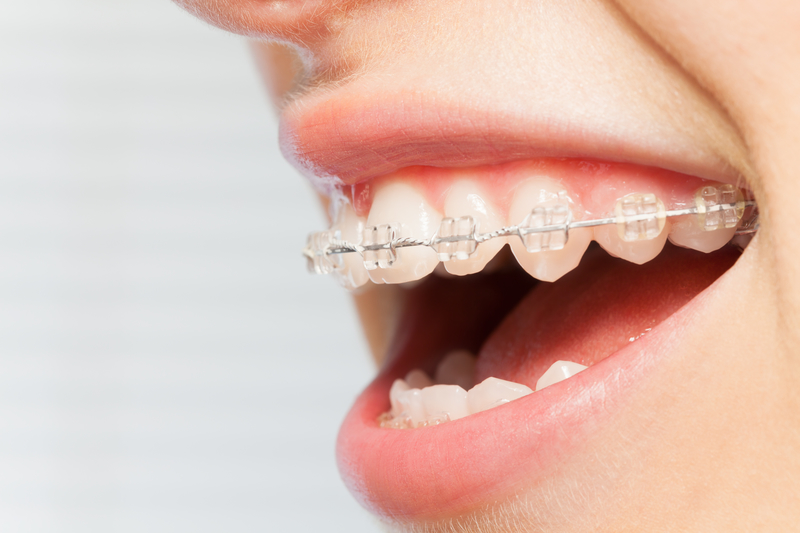
Surgical orthodontics is sometimes needed for those patients whose upper and lower jaws don’t align correctly and a proper bite cannot be achieved. Surgical orthodontics will change the alignment of your jaw, which will affect your teeth. Braces are normally involved in this process to correct teeth movement. Since this is a surgical process, there are many different options for patients to choose from to fix misaligned jaws. Find out whether you’re eligible for surgical orthodontics and what it can do to fix your smile!
What Surgical Orthodontics Entails
In some cases, surgical orthodontics is recommended for patients whose upper or lower jaws do not line up properly and thus cannot obtain a correct bite with orthodontics alone. Known also as jaw surgery or orthognathic surgery, this process involves correcting irregularities of the jaw bone and realigns the jaw and teeth to function together properly. Surgical orthodontics also can be used to fix aesthetic concerns about a patient’s profile or jaw shape/size. Since this type of orthodontic work involves correcting the alignment of your jaw, your teeth will most likely shift, as well, so braces are used in combination with this treatment.
Those patients who suffer from problems with their chewing, breathing, or speaking due to a misaligned jaw are prime candidates for surgical orthodontics. As mentioned earlier as well, patients who have aesthetic facial concerns can also benefit from these treatments to see what improvements can be made, after consulting with their orthodontist. The downside to treatment is that it cannot be performed until a patient’s jaw is fully formed, so for children and children who struggle with any of the aforementioned issues, they must wait to fully develop before any surgery can be performed. For males, jaw growth typically finishes at age 18, and for females it is completed earlier, at around 16 years of age.
What To Expect During Surgery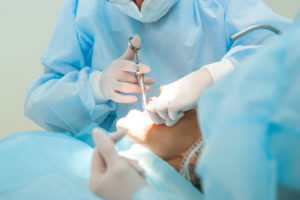
Surgical orthodontics include both pre and post-surgical phases in which treatment is tailored to the individual patient’s needs and jaw structure. Pre-surgery involves aligning your teeth and moving them into a more ideal position before surgery. In many cases, braces are put on 12-18 months prior to surgery to level and align your teeth in preparation for surgery. Orthodontic surgery on your upper jaw can shift it backward, forward, upward, and downward, while surgery on the lower jaw shifts the jawbone either forward or backward. Surgery is performed by an oral surgeon on the inside of the mouth, so there are no facial scars on the mouth, chin, or other surrounding areas. The surgeon makes cuts in the jawbone, which are then moved into the correct position. Tiny bone plates, screws, wires and rubber bands are used to hold the newly aligned jawbone into their new position. While smaller than the bracket that is fixed onto a tooth with braces, these screws eventually become integrated into the bone over time. In some cases, extra bone may be added to the jaw from your hip, leg, or rib, and secured with screws and plates. During your consult with your orthodontist, you will both discuss the pre and post-surgical treatments that you will be receiving, dependent upon your needs.
Post-Surgery Care
After surgery, the oral surgeon will provide you with certain instructions to help in the healing process, such as:
- What you can eat
- Oral hygiene
- Avoiding tobacco
- Avoiding strenuous activity
- Medications to control pain
- Timeline to return to work/school
Typically, you will need to wait at least two weeks after surgery to resume your normal activities. Initial jaw healing occurs at around six weeks, but complete healing can take up to twelve weeks. After the one month post-operation check up, most patients will be in braces for 6-12 months after surgery, in which the orthodontist will then check the progress of your smile and alignment of the jaw. The entire process, including surgery and your time with braces, can last several years, depending on the severity of the issue and what adjustments are needed.
The results of surgical orthodontics are varied and can lead to a balanced appearance of your lower face, improved function of your teeth, health benefits from improved sleeping, eating, and chewing, and improvement in speech impediments. Secondary benefits include improved self-esteem and appearance for those who seek out surgical orthodontics for aesthetic purposes.
Preventing Surgical Orthodontics
It is recommended that children visit an orthodontist between the ages of 7 to 8 for the main purpose of preventing invasive or drastic treatments later on in life. If a jaw abnormality is discovered earlier on in a child’s life, it can be evaluated and treated sooner without surgery having to be involved. If you or your child are suffering from troubled chewing, eating, breathing, or swallowing, or if you have a misaligned jaw, call Belmar Orthodontics at (303) 225-9016 for an evaluation. Our trained staff can help prepare you as you make this important step in your oral health and guide you to a healthier smile.
Why You Need Both a Dentist and Orthodontist
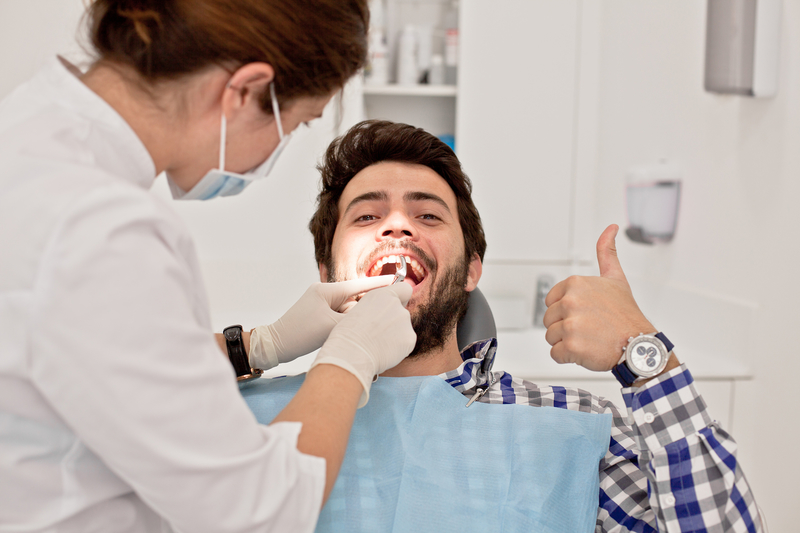
Dentists and orthodontists are both highly-trained professionals that can transform your smile. However, they provide completely different services to patients and both may be needed to help get your smile as healthy as possible. Orthodontic treatment connects to dentistry in many ways, as do the professionals themselves. If you’re like many others, you may need both professionals to keep your oral health in check.
Your Oral Care
Did you know that your oral health can affect all other aspects of your health? This is especially true if you already have some chronic conditions such as diabetes and heart disease. If your oral health isn’t taken care of, your overall health can worse and you are more susceptible to infection. If you don’t control chronic conditions, your oral health can worsen, as the blood vessels that nourish your teeth and gums can become damaged. Your teeth are more likely to decay and get infections that lead to tooth loss.
That is why taking care of your oral health is so important. It can help determine the state of your overall health and if you keep your teeth for a few years or for many. Many people need both an orthodontist and a dentist to help keep their mouth healthy. Not everyone needs an orthodontist alongside their dental care, but millions do. At least 4 million are getting braces each year in the United States alone to correct bite, alignment and problems with the teeth that lead to oral health diseases. When oral health care is happening at home, yet gum disease tooth decay continue to happen, it’s time to also seek help from an orthodontist.
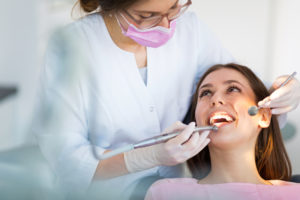
How Can a Dentist Help You?
A dentist is a professional that every person needs. Dentists are vital to you having good oral health for life. They can detect the presence of tooth decay, gum disease, oral cancer, oral sores and any other oral problem, plus they do the work to help correct those issues. These professionals go to school for 10 years just learning about your mouth and facial structures so they can help you stay healthy. Orthodontists receive all that same training, plus 2-3 extra years learning about straightening teeth, bite and alignment issues and structural problems with the mouth.
Because these professionals do different work, you will probably need both. Dentists have the primary duty to find the presence of tooth decay (cavities) using digital and x-ray technology. Then they have many different procedures to remove decay, fill the cavity, and restore your smile. They can do cosmetic work to make your smile look better and they deal primarily with oral health diseases and helping you avoid them so you don’t have early tooth loss. Orthodontists are trained to see cavities and oral health issues, but they will do structural work to help change your smile instead of dealing with the disease aspect of your oral health. Their work focuses on prevention of those issues in the first place.
How Can an Orthodontist Help You?
Did you know that people have had orthodontic care at least since the time of the Ancient Egyptians? More discoveries are finding orthodontic appliances on teeth thousands of years ago. Why? Because people that long ago also understood the benefits of straighter teeth. It took many centuries for orthodontists and orthodontic work to become established.
Studies found that straighter teeth made dental issues less likely to happen. When patients received orthodontic straightening—even through crude methods—they were less likely to have their teeth decay or break and less likely to have gum issues. The same holds true today. Crooked teeth are teeth that are much harder to clean. In a straight, even bite, the top front teeth rest just slightly in front of the bottom front teeth. From the front to the back, the teeth rest evenly on one another, evening out pressure from biting, chewing, eating, talking and more.
When the teeth are crooked, patients will get areas where they simply can’t get a toothbrush or floss to and those areas decay. The teeth may be at odd angles, and with uneven pressure placed on those teeth all the time, they may simply break. If you have crooked teeth, an orthodontist can easily make a plan to straighten them. Using digital x-rays, an orthodontist can examine your bite, alignment and incoming teeth and can make a plan to ensure all your teeth line up for the best oral health you could have.
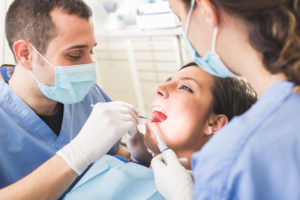
Do You Need an Orthodontist?
Not everyone will need an orthodontist, but their care can benefit most people. Even getting slight straightening of the teeth can reduce your dental breaks, emergencies and issues with oral health diseases. Orthodontic care can even help with bad breath if that stems from plaque and bacteria in the mouth that you can’t quite get rid of. To know for sure if you need an orthodontist, make sure to schedule an examination.
For children, the national recommendation by groups such as the American Association of Orthodontics is to visit an orthodontist around age 7 or 8. This is a key time for an orthodontist to be able to tell if the incoming adult teeth are coming in at the correct angle and place in the mouth. Oral health issues that can become severe later on in life can be caught early and childhood and many oral problems can be prevented with some orthodontic care. For all other issues with finding and filling cavities, gum disease, sores and more, make sure to call your dentist. To schedule your consultation with the orthodontist, call Belmar Orthodontics today at (303) 225-9016!
Be Thankful for Orthodontic Treatment

Studies show that not enough Americans are taking good care of their teeth, especially through dental and orthodontic treatment. The advanced technology available today is what allows patients to keep their natural teeth healthy for life and is something that millions in the world don’t have access to. Find out why oral health services such as orthodontic treatment is so important to patients and something to be thankful for this time of year!
Your Oral Health
When you think of the most chronic conditions and diseases that plague people today, you may not think of cavities as being one of the them. The National Institutes of Health reports that tooth decay—or cavities—are the most “chronic, prevalent disease” among American children and adults. In fact, about 92% of people have tooth decay by the time they reach adulthood. In all age groups, roughly between 20% and 25% of people have untreated decay they are not aware of.
What does tooth decay have to do with orthodontic treatment? This decay can happen to anyone at anytime and you are more likely to have tooth decay during your orthodontic treatment. Many patients opt for lingual, ceramic or traditional metal braces to straighten their teeth. These methods require brackets that are bonded to the teeth with wires that pass through those brackets. Even though these appliances are highly effective for providing beautiful straightening power, they can make it harder to clean your teeth. Because it’s harder to clean them, and some patients don’t take the extra time to do this, you can end up with tooth decay. That adds to that 92% statistic.
The best way to eliminate your risk for that tooth decay (as well as other oral health diseases), is to properly care for your teeth both with and without braces. That involves brushing your teeth at least twice a day for 2 minutes at a time, as recommended by the American Dental Association. When you have braces, you have to do this after every meal to avoid acidic plaque buildup, which happens when your food and drink sugars mix with mouth bacteria. With braces, threadable floss to go around brackets and wires is generally needed, as well as cleaning items such as a waterpik (water shooter) tool and a proxabrush for brackets. Your oral health can be stellar during orthodontic treatment with the right oral hygiene.

How Does the U.S. Compare?
Orthodontic treatment is a time when those in the U.S. can have a greater risk for developing cavities. This comes from a lack of oral hygiene during your orthodontic treatment period. However, the world at large is battling oral health diseases and poor dental and orthodontic care on an epidemic scale. The World Health Organization reports that cavities (tooth decay) and gum disease (periodontal disease) “have historically been considered the most important global oral health burdens”.
60%-90% of people worldwide have tooth decay and oral diseases connected to this condition. Children are affected the most, but statistics are almost as high in adults worldwide. Even though the U.S. is at a high percentage when it comes to tooth decay (92%), the presence of tooth decay is generally eliminated in most of the population through proper dental work and access to dental services. In the majority of other countries—especially underdeveloped ones—dental or orthodontic work is not a possibility for most. Oral health diseases are simply left untreated or the teeth are pulled when they become too painful.
The Connection to Orthodontic Treatment
Getting a cavity or having an oral health problem during your life can definitely be avoided, but most people will have some sort of oral problem, even if it is small. There are ways to prevent those problems such as proper brushing and flossing every single day. A great way to reduce your risk for oral health diseases is through orthodontic treatment. For children, this is known as child orthodontics. The American Association of Orthodontics recommends that children have their first orthodontic appointment between age 7 or 8.
This is a time when baby teeth are starting to fall out and adult, permanent teeth are starting to come into the mouth. Proper examination by an orthodontist can sport bite and alignment issues that are developing in children. When these issues occur, the teeth can come in crooked all over or they may not rest in the position they are supposed to. This can lead to speech impediments, many dental emergencies and broken teeth in the future from uneven dental pressure, higher instances of tooth decay and gum disease, and problems with oral health diseases.
Orthodontic treatment when young can help align the teeth and jaws to prevent oral problems as a child grows. When teens and adults receive orthodontic treatment via braces, they can better straighten permanent teeth when they come in. This sets everything straight and functional before the jaws harden in adulthood. Straight teeth and aligned jaws make it so cleaning the teeth becomes almost effortless. The risk for tooth decay and gum disease is also significantly lower.

Be Thankful for Your Orthodontic Treatment
Dentistry and orthodontic treatment helps diminish the presence of oral diseases.Yes, tooth decay and gum disease happen frequently due to poor oral hygiene habits. However, orthodontic treatment can help prevent those problems in the first place. Great oral care can prevent developing problems throughout your life. Even when these issues do happen, you won’t have to simply get your teeth pulled or let them decay and fall out of your mouth.
You have great orthodontic and dental options in the United States that allow you to keep your teeth, while many people across the globe have to lose them. Remember that the next time you think about skipping your oral care appointments. To reduce your risk for oral health diseases, you can call Belmar Orthodontics at (303) 225-9016 and ask about your orthodontic treatment plan.
How Bite Correction Can Change Your Life?
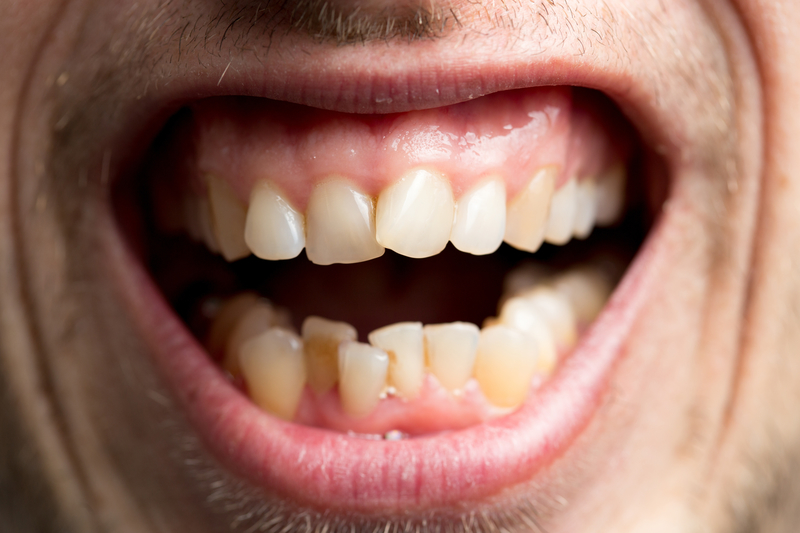
Do you or your child have a problem with their bite or alignment? These problems can seem small at first. However, as a child grows into an adult, bite or alignment issues could cause many health problems. It can even cause speech impediments and difficulty chewing in the future. Find out how bite correction can improve your health and just how important it is to get bite correction via braces if you need it!
Your Bite Should Be a Certain Way
The structure of your mouth is defined by how your teeth and jaws are formed. Your upper jaw and your lower jaw should both follow the same arch in a U shape. Those arches should also line up together. The teeth as well, should lie on top of one another evenly, with your back top molars resting on your back bottom molars all the way towards the front. In a normal bite, the front top teeth will rest on top of your bottom teeth, except they will be just slightly in front of those bottom teeth.
Orthodontic care is not just for teens that are looking to get a straighter smile. In fact, about 1/4th of all people that wear braces are actually children! The American Association of Orthodontics recommends that children have their first orthodontic visit between the ages of 7 and 8. Having an examination early-on helps prevent the progression of orthodontic issues, such as a misaligned bite. How a child’s mouth is forming is a great indication of what their mouth will look like as an adult. If we can already see that their teeth are growing at the wrong angles, or that their jaws don’t line up, we can predict that oral health issues will be present in the future. That is why having this orthodontic appointment at 7 or 8 is so important.
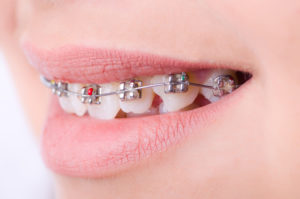
Types of Bites
When a child comes in to have their mouth examined, we can see how the top and bottom jaws line up. In a mouth with correct bite formation, the jaws will line up. If they do and the teeth are not coming in at crooked angles, then a child won’t need orthodontic care unless they want to straighten their teeth later on in life. However, prompt treatment will be needed for alignment and bite correction if a child or older patient has:
- Overbite – The upper front teeth overlap too much over the bottom front teeth.
- Underbite – The upper front teeth rest behind the bottom front teeth.
- Crossbite – Teeth are at varying angles in the mouth, which can lead to decay, broken teeth and speech problems.
Benefits of Bite Correction for Children
The ideal time to receive any treatment for bite correction is during the childhood years. This is when the mouth and jaws are still growing. Because the bones aren’t set yet, it is much easier for an orthodontic appliance to mold a bite into the correct shape without too much effort. This is generally why a child would receive bite correction treatment before they are 10 years old.
If a child receives bite correction via braces, they benefit from their mouth forming correctly. Where there were once speech problems developing, their speech can start to sound normal without lisps or other impediments. Facial features will appear more normal because the structure of the mouth will be maintained with orthodontic appliances. In a child with severe bite problems, some people can physically see parts of the jaws jutting outward. This makes the face look different than it should, and speech will almost certainly be compromised. We stop that incorrect shaping before the jaws harden later on and before dental diseases and problems are developed.
Even if you don’t detect any dental issues with yourself or a child, there are still many advantages for bite correction and braces at an early age such as:
- Observing the progress of incoming teeth
- Monitoring facial and jaw development
- Guiding incoming teeth into their ideal position
- Detecting hidden dental issues
- Reducing the risk of impacted teeth
- Decreasing the risk for permanent tooth extractions (as teeth won’t get uneven pressure that breaks them)
- Reducing the risk of cavities and gum issues that happen when the teeth are crooked and harder to clean

Benefits of Bite Correction for Adults
If you didn’t receive orthodontic care as a child, it is not too late to receive it later on in life. Adults and teens make up the other 3/4ths of patients that get braces. At about age 11 or 12, most of the permanent teeth should be in the mouth. At this time, we can look at a patient’s teeth and see if they need their teeth straightened. When bite problems are present (because child orthodontics was not done), it is harder to do them as teens and adults, but it can be done with normal orthodontic appliances. In some cases, some surgery may be done to reshape areas of the mouth that have hardened into place.
However, the benefits of bite correction and tooth alignment for teens and adults is astounding. Studies show that people perceive you as more successful, healthy and happy if you have straighter teeth than if you have crooked teeth. You’re more likely to get a job over someone that has crooked teeth, because your smile is an expression of your health and how well you care for yourself. That can translate into how well you care for other things, like your obligations.
Studies show that in adults and children alike, that confidence soars and smiles are shared more often when people feel good about their smiles. That confidence boost can change your entire outlook on life, and can lead you to be a more successful person than you otherwise could be. If you have teeth in need of bite correction or straightening, don’t hesitate to see what orthodontic care can do for you! Call Belmar Orthodontics today at (303) 225-9016!
What Is an Orthodontist?
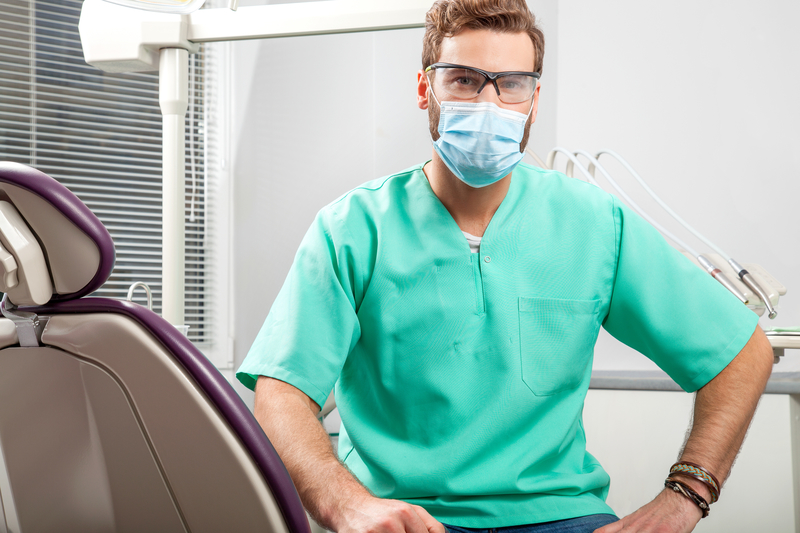
If you want to be an orthodontist, you have at least 10-12 years of schooling ahead of you. Orthodontists are very similar to dentists, but they perform completely different tasks in an office than a dentist would do. This is why you need to see both an orthodontist and a dentist if you have braces. See what services they provide that no one else can!
Want to Become an Orthodontist?
To become an orthodontist, a person has to commit to at least 10-12 years of education, training, fellowships and more. Even after that time, and orthodontist must continue testing and studying throughout the years in order to do orthodontics. An orthodontist is a professional that specializes in correcting crooked smiles, bite and alignment issues, jaw problems and aesthetics of the mouth.
They do this through braces, which commonly consist of metal bracket and wire appliances. Those appliances mold the teeth and jaws into specific alignments and positions. Through focused pressure with these mouth appliances, a person with major bite, alignment, or crooked teeth problems can find themselves with a beautiful, functional smile. This is especially beneficial for patients who have oral health problems that cause them speech impediments and difficulty biting, chewing, speaking and functioning normally.
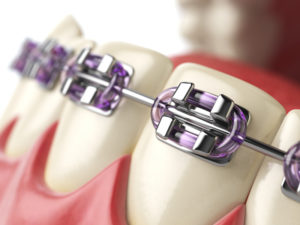
What Does An Orthodontist Do?
An orthodontist is a step above a dentist when it comes to their schooling. To become an orthodontist, a person must complete 4 years of undergraduate schooling at a university. They then apply for dental school and must be accepted. After 4 years of dental school, many students become dentists. However, orthodontists must continue to do at least 2 more years of orthodontic school and fellowships to do orthodontia as a profession.
Even though orthodontists are trained in dentistry, they do different work than dentists. They provide services such as correcting misaligned teeth and smiles, overbite, underbite, crossbite, and other alignment issues. Some are trained to provide surgical orthodontic procedures, or they work closely with an oral surgeon in correcting a misaligned jaw.
For patients who receive surgical orthodontics, an orthodontist will provide pre-surgical orthodontic care to align teeth and jaws as much as possible. A patient will then have oral surgery done to correct issues that can’t be done without surgery. Then, the jaws and teeth are aligned to their final, complete position through orthodontic appliances. If a patient doesn’t receive surgical orthodontics, they generally do 18-24 months of braces to straighten their teeth. Primarily, this is what an orthodontist does: they design braces (based on what type you pick) that fit your smile and that can shape it straight over the course of 1-2 years.
How It’s Different Than Dentistry
Both dentistry and orthodontics focus on oral health and improving a person’s smile. However, dentistry primarily strives to clean the teeth, fix tooth decay, perform root canals and treat gum disease. Patients also receive dental crowns, bridges and implants, and many cosmetic dentistry procedures. If you need teeth whitening or want to improve the look or health of your teeth, seek out a dentist. They can perform teeth whitening services, provide dental veneers and implants, and can help with oral health diseases.
However, if you need your teeth straight in the first place, you need an orthodontist. The American Dental Association recommends that every patient see a dentist at least twice a year to avoid major oral health diseases. You will need an orthodontist at various intervals in your life. However, you don’t see them as frequently throughout life like you would a dentist. When you have crooked teeth or problems with your jaws or alignment, you work with an orthodontist to fix the major issues. Then, a dentist fixes the more minor issues like the color of your teeth.
A dentist is not trained to straighten the teeth even if a dental office provides a transparent aligner service such as Invisalign. You always want to choose a trained orthodontist for properly straightening your teeth so oral issues don’t arise.
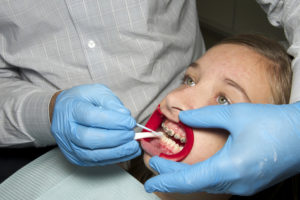
Do You Need Orthodontics?
When battling tooth decay, gum disease, bad breath and more, seek out a dentist. If you want to correct jaw, teeth, alignment, and bite issues, seek out an orthodontist. You may find yourself visiting both often if you receive braces as a child and then later as an adult or teen. Most orthodontists are trained to correct jaw and bite problems in children. You should always take your child in to see an orthodontist by age 7 if you already haven’t. The American Association of Orthodontics recommends this, as major bite and alignment issues of the jaws and teeth can be corrected easily when young. As a person grows older, the jaw hardens and becomes more permanently fixed, and oral health problems are much harder to correct.
If you are deciding to invest in braces, take a look at your teeth. Are they crooked? Do you find that either the upper or lower jaw overlaps the other significantly? Do you have problems speaking, eating, biting or chewing at times? You could benefit from orthodontics! Most people can significantly improve their oral health and their happiness (from having a beautiful smile) if they choose to see an orthodontist for help with their smile.
Dr. Hardy’s Office
Dr. Hardy is an award-winning orthodontist in Lakewood, CO. He is an active member of the American Dental Association and the American Association of Orthodontics. Dr. Hardy works with a team every day to make sure his patients young and old are cared for. At his center, he offers patients the option of getting ceramic, clear braces, traditional metal braces, lingual braces and Invisalign treatment. He can perform surgical orthodontics if needed and pediatric orthodontics. When choosing a center for your family, you want one that can treat patients of all ages and a center whose staff knows how to work really well with children. You can find that at Dr. Hardy’s Belmar Orthodontics office by calling (303) 225-9016!

